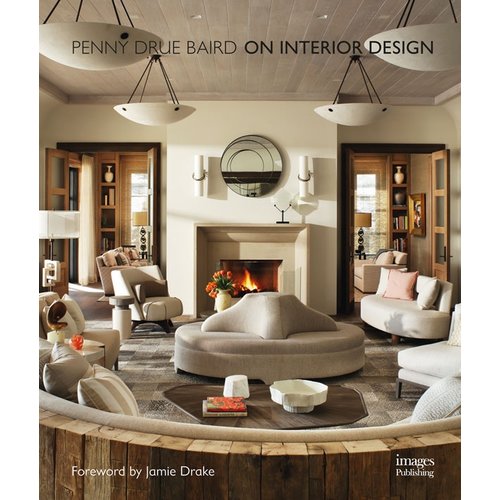Commercial Designs Demand Longevity

Designweave’s Dash was used in the conference room and coordinated with the broadloom throughout the rest of the building.
It’s difficult to find any upside to the lingering effects of this recession, but there is one significant positive: The economy has forced flooring retailers to become better well-rounded, product-savvy professionals. Researching products thoroughly to match the right product to the right application is critical.
In many cases, the retailers’ customer base has expanded to include a larger segment of Main Street and mainstream commercial. Given that fact, it’s important to realize that commercial customers are searching for designs that have a timeless quality to them, and the only way to achieve that is to specify products with longevity.
By longevity, I am referring to sustainable products built for years of use, enduring colors, and total environments that have “staying power.” More than ever, interiors need to remain relevant and functional for an extended number of years, providing a quantifiable return on investment. Creating designs with longevity has become a universal trend, and whoever is responsible for specifying floor coverings (that may very well be you) needs to take that trend seriously.

Kraus Flooring’s Neolithic broadloom with companion modular tiles, Forces of Nature.
I’d like to share a good example of a retailer specifying the right product for the right application. Bixby Knolls Carpets in Orange, Calif., shared with me a recent corporate installation they did for the strategic center of Farmers & Merchants Bank. I was invited to visit this high-tech 25,000 sq. ft. facility in Southern California. The two-story building featured large open areas, with individual offices positioned around the perimeter. Raised access flooring over a concrete foundation housed electrical wires, phone lines and even air conditioning vents circulating compressed air.
Jim Snodgrass, owner of Bixby Knolls, and sales specialist Lon Beard identified the ideal product for this type of new construction. They specified large-format carpet tiles, which would be well proportioned to the expansive open areas. Shaw/Designweave’s Plush Linen was the product of choice. The striated 24” square tiles were quarter turned to add visual interest, and they carried the space beautifully. This retailer did his research on what the client needed, both aesthetically and functionally.
Here’s the analysis that led them to their final choice, since the flooring material needed to meet the following very specific criteria. 1. Facilitate accessibility to wiring and fixtures beneath the raised access floor. 2. Allow for the replacement of damaged tiles in the future without workplace disruption (also with the intent of extending the aesthetic lifespan of the floor covering). 3. Display excellent styling and subtlety of pattern suitable for a large open area. 4. Provide ease of maintenance and cleanability. 5. Meet the need for anti-static properties (electrostatic propensity less than 3.5 KV permanent conductive filament). 6. Address durability (28 oz. 1/12 gauge construction, multi-level pattern loop pile construction supports high traffic patterns).

The offices in the Farmers & Merchants Bank used Shaw/Designweave’s Plush Linen striated 24” square tiles. The tiles were quarter turned to add visual interest.
Hospitality, medical facilities, universities, corporate installations-all have unique requirements and specific times when installations can be done with the least amount of disruption. This could very well be one reason why carpet tiles are a favored choice. Installations can be done incrementally, a section at a time. Also, since there is minimal cutting, it eliminates the need for a staging area. For multi-story buildings, delivering the carpet to upper floors is much easier utilizing tiles rather than broadloom.
When raised access flooring is not a consideration, commercial grade broadloom carpet in a glue-down installation is very functional. As the interior designer for a new commercial building in Irvine, Calif., I analyzed the floor plans carefully before specifying a carpet.
This building had oversized windows and the flooring would be exposed to excessive natural light. For that reason, I chose a solution-dyed nylon with fade resistant properties. To add the longevity factor to the selection, I chose a carpet with a tweed-like coloration in a low-profile loop construction. Nylon handles high-traffic areas beautifully, and the multicolor tweed has been very forgiving in hiding soil.
One designer tip I’d like to pass along, especially as flooring budgets are pretty tight these days: Consider choosing a value-priced carpet for individual offices and open work areas in a commercial building. Then upgrade the carpet where it counts the most: Lobby areas, guest conference rooms-areas where it will have the most impact and highest visibility.
Upgrading the conference room carpet is exactly what I recommended for the Irvine building. It was done in Designweave’s Dash, which coordinated with the broadloom throughout the rest of the building. Speaking of broadloom and tile coordinates, be sure to check out Kraus Flooring’s (www.krausflooring.com) Neolithic broadloom and companion modular tiles from the Forces of Nature collection. I found this collection to have an outstanding color line and styling.
Without a doubt, carpet tiles have earned their place in the corporate world where flexibility and accessibility reign supreme. While the residential market remains unpredictable, the commercial sector of floor covering has become even more important. To many retailers, it has become a stabilizing factor for their business.
It will be well worth your time to request updates on modular carpet tile lines from your manufacturer/distributor partners. High style and designer-level color lines await you. Researching and analyzing product is still the key to specifying correctly, and the ultimate key to satisfying your commercial customer’s long-term needs.
Looking for a reprint of this article?
From high-res PDFs to custom plaques, order your copy today!






